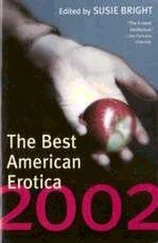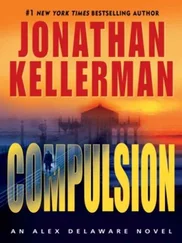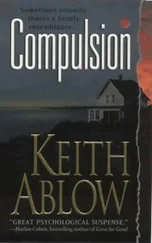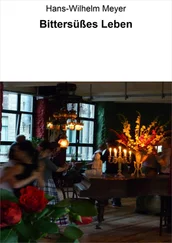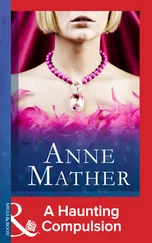Even the idea we had had of the criminal as an educated man seemed to become uncertain. For this idea had been founded on the wording of the ransom letter. Now, from New York, came a story that the letter was virtually copied from a ransom letter in the previous month’s issue of Detective Magazine . The murderer could be anyone who could read and copy what he read.
Yes, the murderer would be caught soon, soon, everyone declared. As fright increased in the city, the Tribune’s front-page cartoon showed a cowering man, huddling in a dingy hotel room, clutching a newspaper, with other papers scattered over the floor. “Closing In” was the caption.
But Artie and Judd, following the editions, as yet felt no such dismay. Only once during those days was Artie irked. A late edition of the News appeared without the murder in the banner headline. Instead, the headline was about some exclusive interview obtained in Rome. The new boss of Italy had given an audience to a crack foreign correspondent. “Fascism is a spiritual movement,” Artie read. And he suggested to Judd, “Say, while you’re over there in Italy, how about buying a couple of those black shirts? They look pretty snazzy.”
Judd read the rest of the interview, becoming rather excited. “Listen, I must try to see him!” This Mussolini certainly understood the philosophy of Nietzsche. It was by the will to power, Mussolini declared, that Italy would rise again.
Artie laughed and pulled away the paper to turn to the pictures of the newest murder suspects. There were some good ones.
A picture of a young woman, a showgirl type, a gangster’s moll. Yes, she really was. She had been living with a confidence man and she herself had phoned the police. She suspected her friend was the murderer. He kept all kinds of poisons in their room, she said, and he possessed a portable typewriter.
And the police were also investigating a man who lived only a block away from Hartmann’s Drugstore and who had formerly taught science at the Twain School. The man’s neighbours had tipped off the police. They were suspicious of him because he owned a portable typewriter and he liked small boys.
Police were checking, too, on relatives of the school’s athletic coach. Several of them had been picked up for questioning. Meanwhile, Artie read, preparations were being made to provide absolute privacy for the funeral of Paulie Kessler.
That night, a floral bouquet arrived at the Kessler home, with condolences from “Harold Williams”. Police cars, cabs rushed to the florist shop, not ten blocks away. The shop was closed. Four of us located the owner in a nearby flat. Yes, he had sold the bouquet, but he had not noticed the name on the card. We told him – the same name as on the ransom letter. Slowly, his first fright-reaction was replaced by a sense of importance, for was he not the sole being who had actually seen the kidnapper-fiend in person? The florist concentrated on recalling the appearance of the customer. Only a few hours ago. Yes. A tall man, about thirty, wearing grey clothes. Wearing glasses? No, but he squinted slightly.
From this, a portrait of the killer was evolved; newspaper artists drew the picture, everyone was alerted to be on the lookout for a thinnish man – long face, high forehead, age about thirty – wearing a grey suit.
Moreover, he drove a Winton car! The florist was certain he had seen his customer drive away in a Winton. Thus he corroborated the story told by the little boy who had seen Paulie get into a grey Winton with a tall, thin man!
And on Sunday morning we were all pretty sure of his identity. He was a druggist named Clement Holmes, who had just tried to commit suicide. Holmes had been taken to the South Side Hospital. He was tall and thin. Police had questioned his wife and daughter, who told how strangely Holmes had been acting. He had been terribly worried about money matters, having recently lost his drugstore. Saturday, he had left the house… Was it at the time “Harold Williams” had appeared at the florist? It proved to be during the very same hour. Later, Holmes had returned in a terribly agitated state and had chased his wife and daughter out of the apartment. When they ventured back, they had found him on the bed, an empty phial of poison in his hand.
At the hospital, Holmes had been restored to consciousness, but to all questions he gave only babbling, meaningless replies. In the morning, the florist was rushed to the hospital to identify the suspect. But Holmes had vanished! SUSPECT FLEES HOSPITAL! Would the madman turn up at the funeral?
Somehow, the funeral was held with a degree of dignity. On the plea of the bereaved millionaire and of his friend Judge Wagner, all editors were prevailed upon to restrain their coverage. A police cordon kept photographers at a distance. We agreed among ourselves not to try to interview Paulie’s mother, watching respectfully from across the street as she walked, trancelike, almost carried by her husband and his brother, to the black limousine. Judge Wagner had given us the list of pall-bearers, Paulie’s classmates, the richest boys on the South Side. We watched from across the street as they came out, in their knickers and black stockings; each of them might have been the victim.
At the cemetery we all stood in a knot, whispering and conjecturing as to whether the murderer might appear. The family procession passed into the grounds, and we followed, remaining at a respectful distance. I heard the rabbi, speaking briefly – the crime was not mentioned; he spoke only of a young life taken in purity. Then the Kaddish, recited very softly by the father. And thus was Paulie Kessler buried a second time.
We came away hurriedly, for there was a police tip that Clement Holmes had been seen, in a Winton, on Skokie Road.
Monday, police were checking every registered Winton owner in Chicago. One had even turned up whose name was Harold Williams. But it seemed he had an absolutely airtight alibi.
In the afternoon there was a sudden wild alarm, and we followed police cars to an address on Harper Avenue. The pavement was filled with people asking one another what had happened. Police came rushing out of doorways; police were scouring the alleys. It seemed that a tall man in a grey suit, wearing a fedora hat, had come hurrying into a rooming house saying excitedly, “I want a room right away. I’ve got to get off the street!”
He had behaved so strangely that the landlady had whispered to a lodger to call the police. The stranger must have heard, for he had turned and run out of the house. There had been a wild chase through back yards. But the suspect had got away.
By then we were looking for a woman, too. The clue came from the glasses. A Lieutenant Cassidy had been detailed to try to trace the spectacles, and he had consulted an optician near the Bureau. The lenses were of a common prescription, as we all knew. But the frame, the optician said, was not a style that he handled. It was a tortoise-shell frame manufactured, he believed, outside of Chicago. Also, the frame was quite narrow. He judged that the glasses might have been worn by a woman. Someone with a thin nose bridge and a narrow forehead. Pictures were drawn of the female accomplice of the man in the grey suit, both of them sitting in a grey Winton car.
We began to hear stories of pressure. The almost mythical multimillionaire founder of the Weiss-Straus enterprises had appeared in the office of State’s Attorney Horn. He had come down with Judge Wagner. The magnate had asked pointedly about the progress of the investigation. For though the slain boy had been only remotely related to the Straus clan, there were among his classmates two of Weiss’s favourite grandsons. Were they safe? Were any children in Chicago safe as long as this monster remained uncaught, unknown? An editorial of the same tenor appeared in our own paper and in the Post .
Читать дальше


